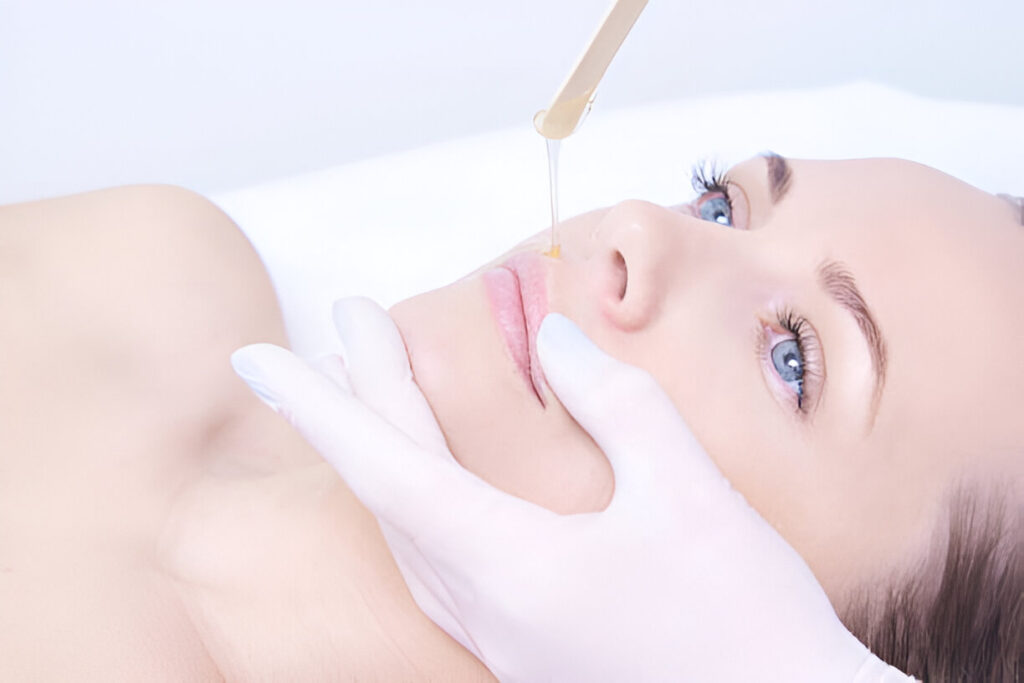If you want brighter, more even skin, a chemical peel might be just what you need. Peels can help remove dark spots, sun damage, and dull skin by gently removing the top layer of dead skin. This reveals fresh, glowing skin underneath. Many people use chemical peels to improve their skin tone and reduce discolouration. But with so many types of peels available, it can be hard to know which one is best for skin whitening. In this article, we will explain the most effective peels for lightening the skin and how to choose the right one for you.
What Is a Chemical Peel?
A chemical peel is a skincare treatment that uses a special acid solution to exfoliate the skin. The solution removes the top layers, which are often damaged or darker due to sun, acne, or ageing. Once these layers are removed, the body naturally creates new skin that is smoother, brighter, and more even in tone. Chemical peels are often used on the face, neck, or hands. Depending on the type, a peel may be very mild or go deeper into the skin. Most whitening peels are gentle and work over time to improve clarity.
Does Skin Get Darker After a Chemical Peel?
How Do Peels Help with Whitening?
Peels work by speeding up the natural turnover of your skin. This means that dull and dark layers are removed faster and replaced with fresh skin. The process also reduces melanin, which is the pigment that gives skin its colour. Too much melanin in one area can cause dark spots and uneven tone. Some peels also include ingredients that block melanin production. Over several treatments, skin becomes lighter, more even, and has a healthy glow. While results are not instant, they build up over time, especially when combined with good skincare and sun protection
Glycolic Acid Peel
Glycolic acid is a popular peel made from sugarcane. It’s part of the alpha hydroxy acid (AHA) family and is well-known for its brightening effects. This peel removes the top layer of skin, which helps fade mild pigmentation, sun spots, and dullness. It also boosts collagen and improves skin texture. It’s best for people with normal to dry skin and has very little recovery time. You may feel mild tingling during the treatment, but it’s usually very gentle. When used in a series of treatments, glycolic peels can help whiten the skin safely and effectively.
Can You See Results After One Peel?
Lactic and Mandelic Acid Peels
Lactic acid comes from milk and is one of the gentlest peels available. It’s perfect for people with sensitive skin or mild discolouration. Like glycolic acid, it belongs to the AHA group and helps with surface brightening. Mandelic acid, made from almonds, works more slowly and deeply. It’s especially good for darker skin tones because it carries a lower risk of irritation or post-peel darkening. Both acids help improve skin tone without harsh side effects. These peels are great starting points for anyone new to chemical peels or worried about sensitivity during skin whitening.
Salicylic Acid and Vitamin C Peels
Salicylic acid is a beta hydroxy acid (BHA) that works well for oily or acne-prone skin. It goes deep into the pores, clears excess oil, and helps fade acne marks and pigmentation. It also has anti-inflammatory benefits. Vitamin C peels, on the other hand, are rich in antioxidants and help brighten the skin while reducing dark spots. They work on the surface and help protect the skin from future damage. Both are often used together in treatments to give a clearer, whiter, and more even skin tone over time. These peels also improve skin glow and radiance.
What About Yellow Peel?
This type of peel is known for its strong whitening effects. It includes a mix of ingredients such as retinoic acid, kojic acid, and Vitamin C. These work at a deep level to block melanin, brighten the skin, and boost collagen. Though it’s stronger than some peels, it doesn’t cause a lot of redness or swelling. It’s done in steps, with the peel left on the skin for several hours. Results build up with each session. It’s great for sun damage, melasma, or deep pigmentation. This peel is also good for smoothing fine lines and improving skin tone.
How Long Will a Chemical Peel Last?
Choosing and Caring for Your Skin
Always speak to a skin specialist before starting any peel. Your skin type, tone, and goals will decide which peel is best for you. For mild spots or dry skin, try glycolic or lactic acid peels. If you have oily skin or acne marks, salicylic acid may be better. Darker skin tones should start with mandelic or lactic acid. After any peel, avoid the sun and use sunscreen daily. Don’t scrub or pick at your skin. Use gentle cleansers and moisturisers to help healing. With the right care, peels can safely help you get brighter, more even skin.
Book Your Skin Whitening Consultation at YAH Polyclinic
Ready to achieve brighter, clearer skin? At YAH Polyclinic, we offer safe and effective chemical peels tailored to your skin type and whitening goals. Our skincare specialists will assess your concerns and recommend the most suitable peel for you. Book your consultation today and take the first step towards a more radiant, even-toned complexion. Let YAH Polyclinic help you glow with confidence.
Frequently Asked Questions
How many sessions of chemical peel are needed for skin whitening?
Most people need 3 to 6 sessions spaced a few weeks apart for noticeable skin whitening. The number depends on your skin type, the type of peel used, and the level of pigmentation. Your results improve over time with consistent aftercare and sun protection.
Can chemical peels cause the skin to darken?
Yes, if used incorrectly, some peels may cause post-inflammatory hyperpigmentation, especially on darker skin tones. This is why it’s important to choose gentle peels like lactic or mandelic acid and follow all aftercare instructions. Avoid sun exposure after treatment to prevent darkening.
Are chemical peels safe for all skin types?
Chemical peels can be safe for all skin types when chosen carefully. Sensitive or darker skin types should start with mild peels. Always consult a skin expert to avoid irritation or side effects. The right peel will match your skin’s needs and condition.
Do chemical peels lighten the whole face?
Yes, chemical peels work on the entire treated area, usually the full face, to create an even skin tone. They help fade spots and brighten dull areas. However, results depend on the depth of the peel and how well you care for your skin afterward.
Can I use makeup after a chemical peel?
After a light peel, makeup can be used the next day. For deeper peels, wait at least 5 to 7 days. It’s best to avoid makeup until the skin heals to prevent irritation. Always use gentle, non-comedogenic products after treatment.





